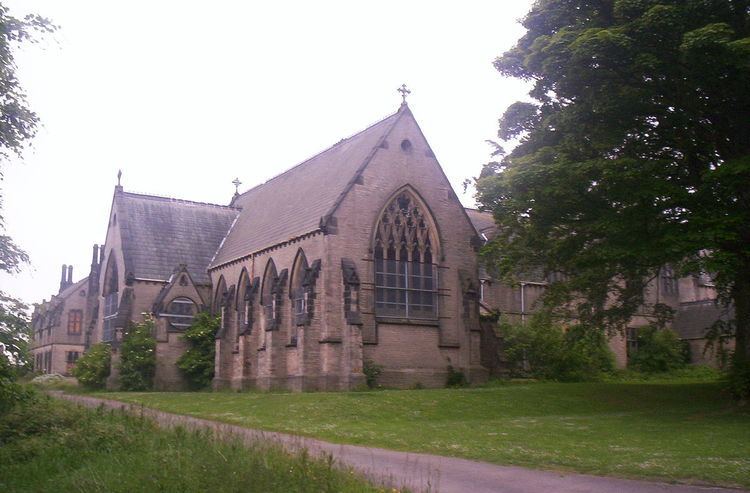Denomination Roman Catholic Phone +44 191 334 5119 | Country UK | |
 | ||
Founded September 29, 1568 (1568-09-29) Hours Closed today MondayClosedTuesdayClosedWednesdayClosedThursdayClosedFridayClosedSaturday1–5PMSundayClosedSuggest an edit Notable alumni Profiles | ||
Ushaw college explore
Ushaw College is a former Catholic seminary near the village of Ushaw Moor, County Durham, England. It was founded in 1808 by scholars from the English College, Douai, who had fled France after the French Revolution. Ushaw College was affiliated with the University of Durham from 1968 and was the principal Roman Catholic seminary for the training of Catholic priests in the north of England, finally closing in 2011 due to the shortage of vocations. The buildings and grounds are now maintained by a charitable trust.
Contents
- Ushaw college explore
- Ushaw college durham high mass 1960
- Founding
- University of Durham
- 21st Century
- Heraldry
- Alumni
- References
Ushaw college durham high mass 1960
Founding
The English College, Douai was founded in 1568 but was forced to leave France in 1795 following the French Revolution. Part of the college settled temporarily at Crook Hall northwest of Durham. In 1804 Bishop William Gibson began to build at Ushaw Moor, four miles west of Durham. These buildings, designed by James Taylor, were opened as St Cuthbert's College in 1808. There was a steady expansion during the nineteenth century with new buildings put up to cater for the expanding number of clerical and secular students. In 1847, the newly built chapel, designed by Augustus Welby Northmore Pugin was opened. This was followed by the Big Library and Exhibition Hall designed by Joseph Hansom, 1849–1851. The Junior House, designed by the distinguished architect, Peter Paul Pugin, was added in 1859. St Cuthbert’s Chapel, designed by Dunn and Hansom, was opened in 1884, replacing an earlier one by Augustus Welby Northmore Pugin, which the seminary had then outgrown. The Refectory was designed and built by E. W. Pugin. The final development came in the early 1960s with the opening of a new East wing, providing additional classrooms and single bedrooms for 75 students. The main college buildings are grade II listed, however the College Chapel is grade II* and the Chapel of St Michael is grade I.
University of Durham
The College became a Licensed Hall of Residence of the University of Durham in 1968. It was independent of the University but offered courses validated by the University, and both Church and lay students studied at the college. The Junior House closed in 1972, its younger students being transferred to St Joseph's College, Upholland in Lancashire.
21st Century
In 2002 the College rejected a report from the Roman Catholic hierarchy that it should merge with St Mary's College, Oscott, near Birmingham. However, in October 2010 it was announced that the college would close in 2011 due to the shortage of vocations in the Roman Catholic Church, and that the site might be sold. Following a detailed feasibility study by the college's Trustees and Durham University (and with the full support of Durham County Council and of English Heritage) during 2011; it was announced in January 2012 that Durham Business School would temporarily relocate to the College during rebuilding of the School’s buildings in Durham. This was seen as the first step in a long-term education-based vision for the site. The University have also agreed to catalogue and archive the Ushaw library and inventory the other collections to ensure their preservation and specialist conservation, with a view to creating a proposed Ushaw Centre for Catholic Scholarship and Heritage.
In 2017, Durham University announced plans to develop an international residential research library at Ushaw College, the first of its kind in the UK, with the aim of attracting scholars from around the world to work on the collections of Ushaw, Durham University and Durham Cathedral. The University has also confirmed that it has extended the agreement to lease the east wing of the College (used by the Business School) to 2027. The College is also used for numerous musical events and for the Ushaw Lecture Series, organised by the University's Centre for Catholic Studies.
Heraldry
The College armorial bearings are "Per pale dexter Argent a Cross Gules on a Canton Azure a Cross of St Cuthbert proper sinister impaling Allen Argent three Rabbits couchant in pale Sable."
Various emblems on shield represent the college's history and foundation, for example:-
Alumni
Clergy
Lay
